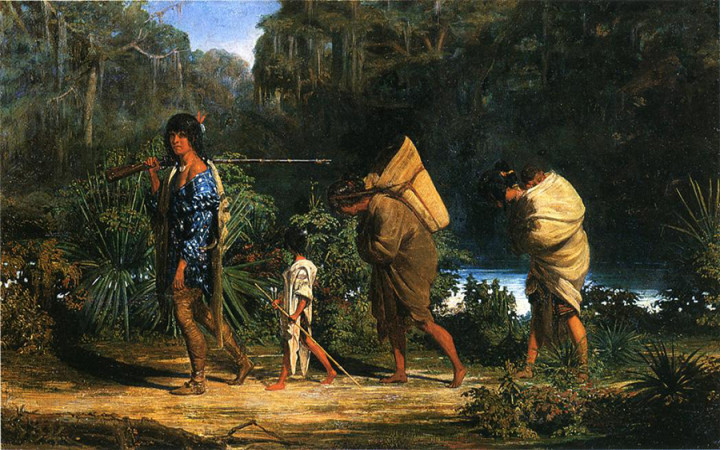Today’s Wonder of the Day was inspired by Rickell. Rickell Wonders, “What is the Trail of Tears?” Thanks for WONDERing with us, Rickell!
The United States has a complicated history with its treatment of American Indians, also referred to as Native Americans. It is a sensitive topic for many people, and today's Wonder of the Day® explores this important issue with respect for the heritage of our indigenous citizens and our country's drive for expansion.
When you think of American Indians, what areas of the country come to mind? For many people, American Indians conjure up images of the American West. For much of history, though, American Indian tribes could be found in many other areas of the U.S.
For example, in the early 1800s, the southeast was home to almost 125,000 American Indians who lived on millions of acres of land in states such as Florida, Georgia, Alabama, North Carolina, and Tennessee. These indigenous peoples had lived on and cultivated these lands for many generations.
Unfortunately for these tribes, white settlers were moving into these areas in large numbers, seeking large tracts of land they could use to grow cotton. Viewing the native tribes as savages, conflicts arose and the settlers increasingly tried to push the native tribes out of their lands.
Some government officials sought to "civilize" American Indian tribes to make them more like the Anglo settlers. They taught them to speak and read English. They also encouraged them to convert to Christianity and adopt European economic concepts, such as private ownership of land and property.
Several American Indian tribes embraced these attempts in an effort to get along with the Anglos. In particular, the Choctaw, Chickasaw, Seminole, Creek, and Cherokee tribes became known as the "Five Civilized Tribes."
As more and more settlers moved to the region in search of land, the land occupied by the tribes became even more valuable. No matter how "civilized" their American Indian neighbors became, the new settlers showed that they were willing to do anything to get the land they wanted, including driving out the tribes by force.
State governments joined white settlers in attempts to force American Indian tribes out. They passed laws limiting Americans Indians' rights and reducing their territory. Despite Supreme Court decisions in favor of American Indians, they continued their efforts to drive out the tribes.
The federal government got involved in 1830, when President Andrew Jackson signed the Indian Removal Act. The act allowed the federal government to take American Indian lands east of the Mississippi River in exchange for land west of the Mississippi River in the "Indian colonization zone" in what is now Oklahoma.
Although the act stated that the federal government must negotiate removal treaties voluntarily, peacefully, and fairly, things did not work out that way in reality. Instead, the federal government systematically forced American Indian tribes to give up their lands and move, often under threat of invasion by the U.S. Army.
Over the course of the next decade, tribes were forced to abandon their lands and march a thousand miles or more — on foot — to new lands west of the Mississippi. Without food, supplies, or any other type of help for the government, the march west was brutal and many did not survive it.
As one Choctaw leader said, the route from their home lands to what is now Oklahoma was a "trail of tears and death." In addition to the hardship of traveling so far on foot, starvation was common, as were deaths from diseases such as whooping cough, dysentery, cholera, and typhus.
By 1840, there were very few American Indians left in the southeastern U.S. Over 100,000 American Indians had been forced to relocate to "Indian Territory" west of the Mississippi River in what is now Oklahoma. Historians estimate that more than 15,000 American Indians died on the Trail of Tears.




